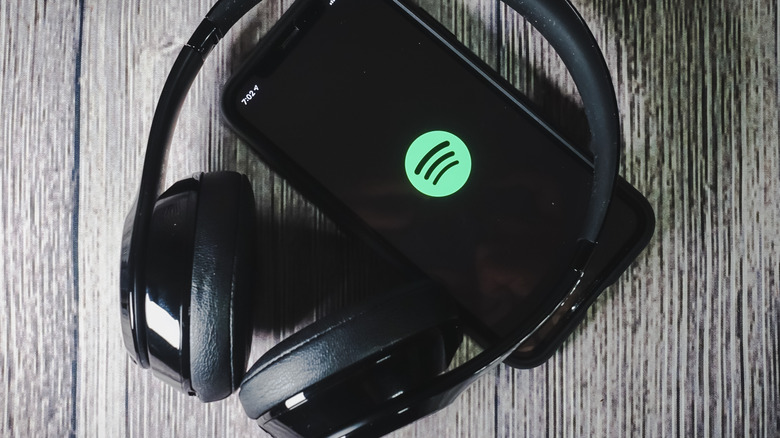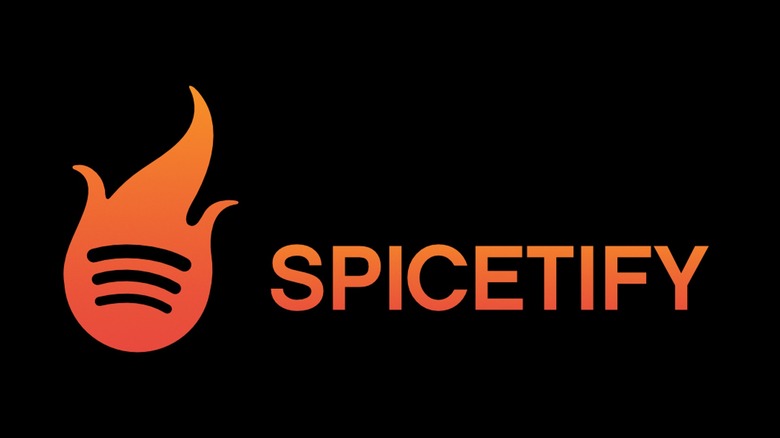Why Spotify's Shuffle Feature Isn't Truly Random (And How To Fix It)
It's a problem many Spotify users know all too well: no matter how many times a large playlist gets shuffled, it always seems to pick out the same handful of songs to play first. While some listeners may simply write this pattern off as a bit of coincidence, others may suspect that something less serendipitous is going on behind the scenes when it comes to Spotify's shuffle feature. As it happens, those suspicions are well-founded.
Despite the assumption of what shuffling is supposed to do to mix things up, Spotify's shuffle feature does not truly randomize the order of songs in a playlist, and it hasn't operated that way for quite a long time. More than a decade ago, the streaming service made a conscious decision to trade in a fully randomized shuffle tool in favor of one powered by a specialized algorithm — the same way that Spotify Wrapped is powered by an algorithm rather than being a simple round-up of data. With that in mind, here's an overview of why Spotify originally decided to shift away from true randomization for shuffling, as well as some tips on how to achieve a more traditional shuffle experience for those looking to embrace the chaos of a truly haphazard playlist.
Spotify believed users did not want true randomization for playlists
Back when Spotify first launched in 2010, the platform came equipped with a shuffle option capable of completely randomizing the order of songs through the Fisher-Yates algorithm. It was that way in the service's earliest years until everything changed in early 2014. In a blog post on Spotify R&D's official Engineering site, the company announced that it was retiring its true random shuffle algorithm due to user complaints.
In the post, Spotify explained that most users do not perceive a perfectly random order as actually random. Spotify found that customers would complain about their shuffled playlists heavily favoring songs from a particular artist instead of giving each musician space in the queue. Of course, the chance that a shuffled playlist might play a bunch of songs from one artist in a row instead of swapping between a bunch of different musicians is a natural and entirely possible consequence of true randomization — even if it doesn't necessarily feel like it.
In response to this feedback, Spotify completely refreshed its shuffle feature. Rather than using true randomization, the new shuffle was powered by a specialized algorithm. Most of the exact details on how this algorithm was built are unknown, but the streamer did reveal that it borrowed from a principle of random sampling to create a shuffling process that would space out songs from the same artist and allow for greater song-to-song variety.
Spotify has seldom acknowledged the existence of the newer shuffle algorithm since 2014, let alone revealed details on how it may have been altered, revised, or iterated upon in the ensuing years. However, it's quite clear that even today, shuffle is far from a truly random experience.
Users have found ways to manually refresh their Spotify shuffle
Whether the issue of Spotify's shuffle seemingly favoring the same handful of songs in a playlist is simply a bug or an intended element of the streamer's current algorithm, users have sought and found ways to mitigate the issue. While it's not currently possible to make shuffle truly random through Spotify itself, some have found small ways to essentially refresh the algorithm and keep their shuffled playlists properly varied.
In a Reddit thread discussing the issue, user u/therealtrousers recommended that affected Spotify users try selecting a song on their playlist that hasn't been played in a while and initiate shuffle from that particular track so as to forcibly unstick the algorithm from favoring a typical order. Meanwhile, u/TopAcanthocephala869 suggested that the problem is rooted in the Spotify algorithm favoring cached songs to minimize data usage, and that clearing the Spotify client cache can refresh the shuffle pool.
Ultimately, users' mileage may vary on these strategies, and they're far from official fixes for the problem. Even if they work, they're only temporary salves and may have to be repeated if a user's Spotify algorithm begins favoring the same few songs again. Nonetheless, there is a way to completely eliminate this issue, but it's a fairly complicated process.
Embrace traditional shuffling with Spicetify
For those seeking a permanent fix to their Spotify shuffling woes, there is actually a way to turn off the platform's current shuffle algorithm in favor of the original true randomization model — at least, on the service's desktop version. However, doing so requires users to download a certain third-party tool and plunge a bit deeper into Spotify's array of settings.
Spicetify, a specialized downloadable tool that is unaffiliated with Spotify, can give users an ever greater suite of customizability options for the platform's desktop client, such as the ability to add custom themes. Most importantly, it allows for the installation of extensions that add extra features to the vanilla playback experience. One of these extensions, titled Shuffle+, gives users the power to change Spotify back to using the Fisher-Yates algorithm for shuffling — the very same algorithm that the service originally used to simulate true randomness.
By enabling Shuffle+ through Spicetify, users don't have to deal with Spotify's algorithm for shuffling. Instead, shuffling will simply take all the songs in a playlist and jumble them up, with no regard for artist prioritization or song-to-song placement. Of course, some users may ultimately find that they do prefer Spotify's regular shuffle algorithm, even if it tends to get stuck on the same pool of songs from time to time. Nonetheless, Spicetify offers at least one surefire way to ensure that every shuffled song gets an equal shot at playing.



